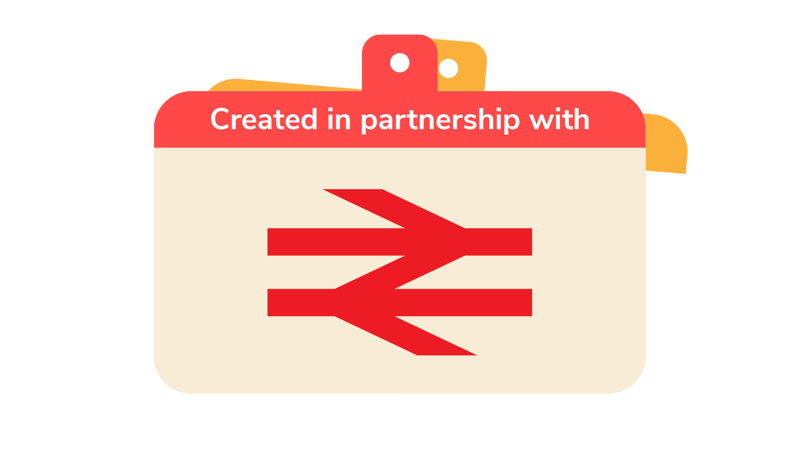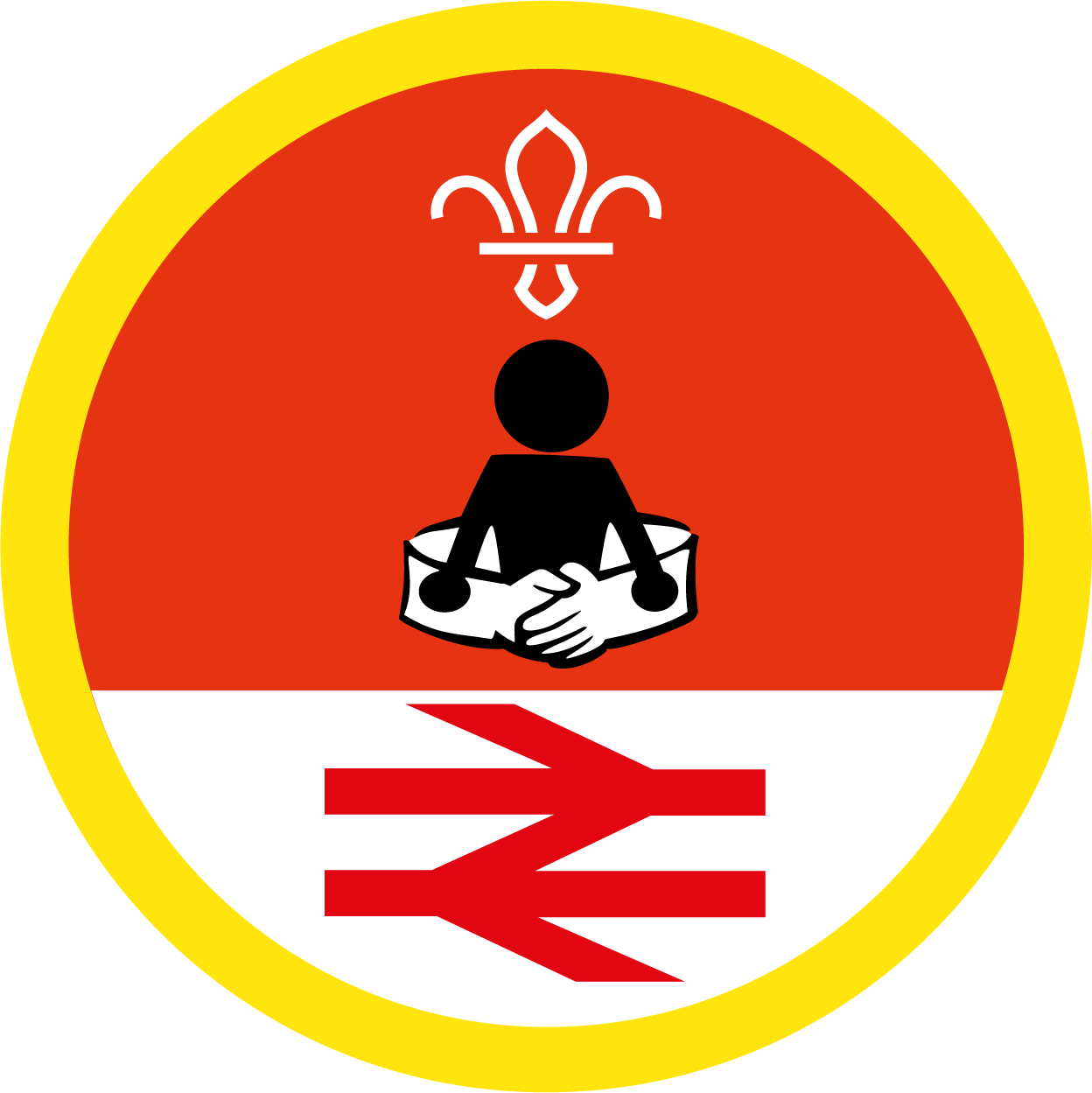
Play Trains and Ladders
You’ll need
- Around 30 cones, hoops or squares to mark out the board or masking tape or chalk
- Decision cards print-outs
- Dice, ideally large dice, such as foam dice
Before you begin
- Use the safety checklist to help you plan and risk assess your activity. Additional help to carry out your risk assessment, including examples can be found here. Don’t forget to make sure all young people and adults involved in the activity know how to take part safely.
- Make sure you’ll have enough adult helpers. You may need some parents and carers to help if you’re short on helpers.
Setting up the game
- You’re aiming to set up a huge board game. To set up the game, lay out the cones, hoops or squares in a row. We suggest using 6 per row. You could also use masking tape or chalk to draw out the spaces.
- If you are laying out 30 spaces, you should have 5 rows with 6 spaces each. You may need more spaces depending on how many people are in your group. It should look similar to a chess board when all set up.
- You may want to run multiple versions of the same game at once if you’ve a very large group. That way people aren’t standing around waiting for their turn for too long.
- Place the decision cards on various spaces around the board. Try and spread out the ones that allow players to move forward and backwards evenly across the board.
Setting the scene for the players
- Gather everyone in a circle and explain how you are going to play a game that’s similar to human snakes and ladders.
- Explain that this version is train themed, so you’ll be thinking about railway safety while playing this game.
- Talk to everyone about how you always need to be extra safe and vigilant when near the railways. Railway tracks, crossings and platforms are not a place for playing on and we should always avoid making poor choices.
- Ask if anyone knows any safety advice for railway tracks, crossings and platforms. Allow the young people to share any personal experiences taking the train or any advice they already know about how to stay safe at the railways.
Play the game
- The object of the game is to be the first player to reach the end by moving across the board from square one to the final square. You will move left to right across first row, then move up to the second and move right to left, and so on. You may want to use masking tape or chalk to add arrows onto the board to show people the directions to move in.
- Ask the young people to line up by the start to begin. They could go in alphabetical or date of birth order.
- The first player will roll the dice to see how many spaces forward they can move.
- Some spaces will have decision cards on them. If a player lands on a space with a decision card, they should read it out to everyone. Make sure an adult or young leader is around to help those who need it. It’s important that everyone hears what the decision cards says as these will have real life examples for the young people to think about and apply to their own lives. The player should follow the actions of the card once it’s been read out. Some will tell you to move ahead on the board and some will tell you to move backwards. Play then passes to the next person.
- If a player lands on a space without a decision card, they should stay were they are. Play then passes to the next person.
- The first person to reach the highest space on the board wins. You can only win by rolling the exact number needed to land on the last space.
Reflection
Remind everyone that railway stations and railway lines can be a very dangerous place if we’re not careful, but if you’re sensible and cautious, you’ll keep yourself safe.
You can help keep others safe, too. If you see someone looking upset at the train station, tell a responsible adult, such as the grown up you’re with or someone who works at the train station. Never approach a stranger without a responsible adult.
The overhead cables that power trains carry 25,000 volts of electricity. This is 100 times stronger than your household electricity. Because it is always on, it’s easily the most dangerous aspect when trespassing.
The third rail is probably the hardest danger to see. It looks just like an ordinary rail, but it carries 750 volts, which is easily enough to kill you.
Every year people are killed while trespassing on the railway. We must never step onto the tracks. Lines may be electrified, and trains can approach at speed.
What did you learn about train safety through this game? Were any of these things you had never even thought of before?
Does anyone know ways we can keep safe at a railway station and near railway lines?
Some things we can do are:
- Never trespass on a railway. It’s illegal. Trespassing includes stepping off a level
crossing onto an area where you shouldn’t be, picking up lost property from the tracks, crossing the tracks at any point other than at a level crossing or taking a walk down the side of the railway track - Keep away from the platform edge. Stay behind the marked yellow/white platform edge lines whilst waiting on the platforms.
- Make sure you apply the brakes to prams and strollers, and always position them parallel to the tracks.
- Always walk around a train station, never run.
- Hold the handrail and concentrate on your footing.
- Keep yourselves and others safe by reporting any unusual items or activity on the railway.
- Take extra care getting on and off a train and mind the gap.
- Never go near the overhead power lines.
- Never play on or near the train tracks, including never walking on or near them.
- Never throw anything onto the tracks or at the lines.
- Wait at and use level crossings to cross railways, following the signs.
- Stay with your grown up at the station.
- Never pick up or rescue anything from the tracks or near them, even if you dropped it. If you drop something on the track, leave it and contact a member of staff.
What steps will you take to be safer the next time you are near the railways?
Safety
All activities must be safely managed. You must complete a thorough risk assessment and take appropriate steps to reduce risk. Use the safety checklist to help you plan and risk assess your activity. Always get approval for the activity, and have suitable supervision and an InTouch process.
- Active games
The game area should be free of hazards. Explain the rules of the game clearly and have a clear way to communicate that the game must stop when needed. Take a look at our guidance on running active games safely.
You can add as many or as few decision cards as you think is appropriate for your group.
Make sure the board is designed in a way that all the young people can move about.
All Scout activities should be inclusive and accessible.
Try some other activities to continue learning about rail safety.
